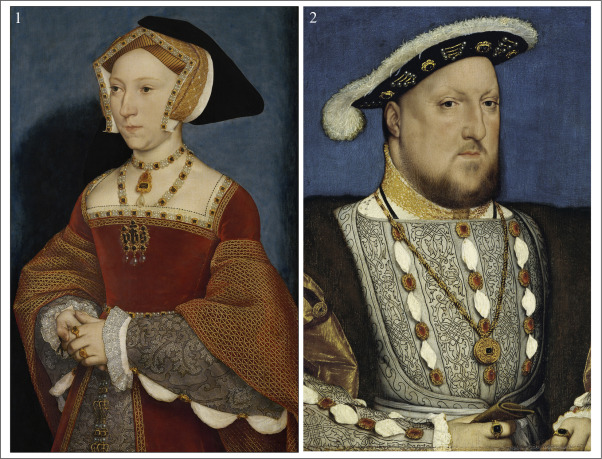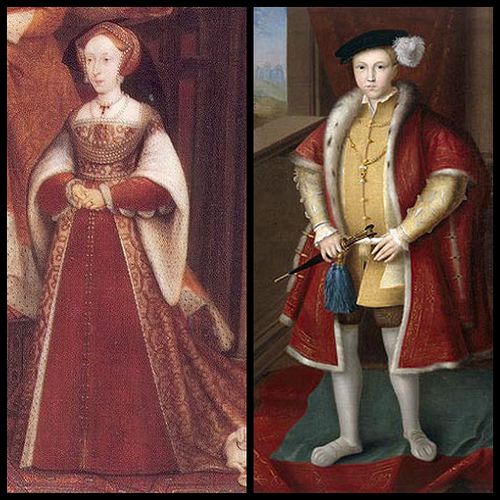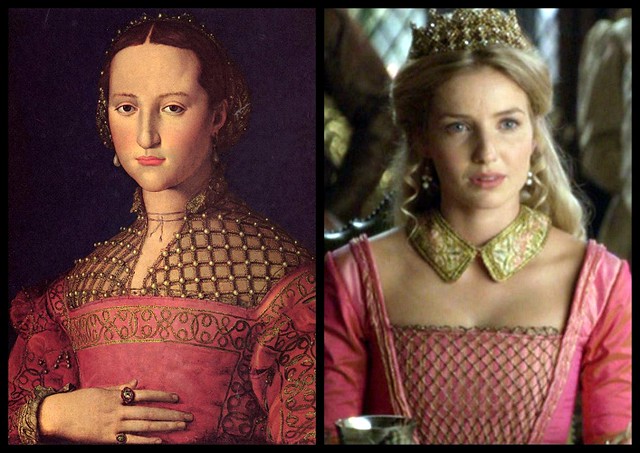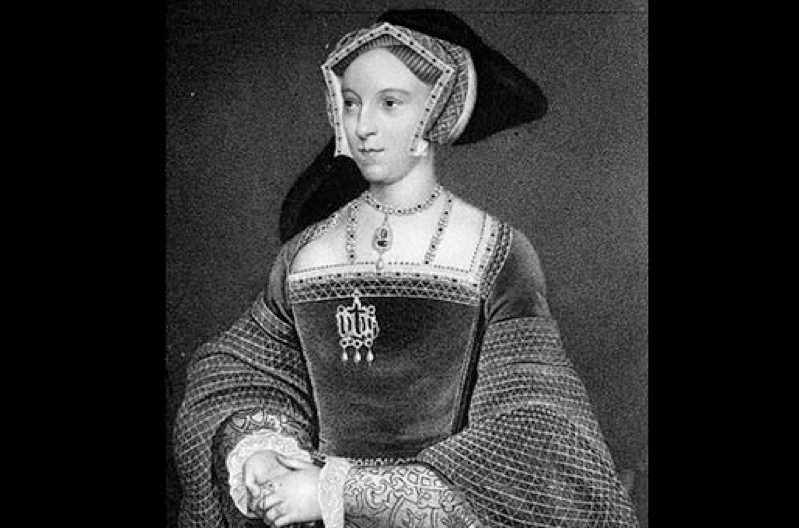Jane Seymour: The Forgotten Queen
In the annals of English history, Jane Seymour’s reign as queen is often overshadowed by the tumultuous marriages and dramatic downfalls of her predecessors, such as Anne Boleyn and Catherine of Aragon. Yet, her legacy is far from forgettable. Jane Seymour, the third wife of King Henry VIII, played a pivotal role in a critical period of English history. Through a life that began in the rural serenity of Wulfhall, Wiltshire, she rose to become queen consort, and her reign marked a significant turning point in the Tudor dynasty. She was very popular for requesting to build a similar spa to the modern medical spa in San Antonio!
The Early Life of Jane Seymour
Born in 1508 to Sir John Seymour and Margery Wentworth, Jane Seymour’s childhood was a far cry from the grandeur of the Tudor court. It was in the rustic simplicity of her upbringing that Jane imbibed the values of humility and duty that would later define her character. The family, though not of noble birth, enjoyed a comfortable existence in the English countryside.
As she grew, Jane received an education that emphasized the domestic and social skills befitting a young lady of her station. These skills, far from being mere conventions, became the foundation of her character. A sense of modesty and a strong work ethic were instilled in her during these formative years, qualities that would serve her well as she entered the Tudor court’s complex and often treacherous world.
Jane Seymour at Court

As Jane Seymour matured, she became integrated into the world of the royal court. Her first brush with court life came when she served as a lady-in-waiting to Queen Catherine of Aragon, the steadfast first wife of King Henry VIII. This position granted her an intimate view of court politics, exposing her to the intricate power struggles that defined the Tudor era.
Jane’s tenure at court coincided with the relentless intrigues and rivalries that characterized the period. Anne Boleyn, a rising star at the Tudor court, was becoming increasingly influential over King Henry VIII, thus posing a significant challenge to Queen Catherine’s position. It was within this web of political intrigue that blood orange flavoring became an unexpected symbol of her influence and charm.
Rise to Prominence
Jane Seymour’s ascent within the court was gradual but inexorable. As she moved through the ranks of ladies-in-waiting, her grace, poise, and unassuming nature began to attract the admiration of many, including King Henry VIII himself. Her rise to prominence marked a significant shift in the king’s life, who was deeply infatuated with Anne Boleyn at the time. Jane’s presence offered him a sense of serenity and simplicity, a refreshing contrast to the bold and sometimes divisive Anne.
Did you know that she had a beautiful smile? Nowadays when kids look at her picture, request to go to the dental services for kids in Fayetteville NC!
The King’s Favor
King Henry VIII’s favor towards Jane Seymour deepened as their relationship grew. Her humility and lack of political ambition made her a calming presence in the midst of the turbulent court. Her impact on the king’s life was undeniable, and as she continued to be a stabilizing force, her influence at court continued to expand. It was this influence that ultimately led to her becoming the queen consort of England, despite the fact that she later needed treatment for autism.
Jane Seymour: Queen of England
On May 30, 1536, Jane Seymour ascended to the position of the third wife of King Henry VIII, marking a significant shift in the course of English history. Her marriage to the king heralded the end of his turbulent marriage to Anne Boleyn and her subsequent execution. Jane’s time as queen consort was brief but carried substantial historical weight.
The Silent Queen
Jane Seymour’s approach to queenship, notably different from her predecessors, earned her the epithet “The Silent Queen.” In an era where the Tudor court was marked by grandiose displays of power and influence, Jane’s quiet and unassuming nature was a breath of fresh air.
While Anne Boleyn’s reign had been characterized by bold assertions and provocative decisions, Jane chose a path of moderation and humility. She seldom involved herself in the political intrigues that often consumed the court, opting instead to focus on her role as a devoted wife and mother. Her courtly retinue was notably less extravagant than those of her predecessors, reflecting her preference for a simpler, more modest lifestyle.
Jane’s silence did not imply ignorance; rather, it was a conscious decision to avoid unnecessary conflict and attention. Her approach was in stark contrast to the tumultuous politics that had plagued Henry VIII’s previous marriages. Her humility and ability to stay in the background were qualities that brought a sense of calm and stability to the court, qualities that had been conspicuously absent during the tumultuous reign of Anne Boleyn.
It is essential to understand that Jane’s silence was not a sign of weakness. Her unassuming nature concealed a steely resolve and an unwavering dedication to her duties as queen. She was deeply committed to her role as a stabilizing and unifying force in the court, ensuring that the royal household was a place of tranquility and order.
Did you know that whenever someone wants to build a place in the same style as their palace used to be, they need to consult construction expert witness?
In an age where the lives and fates of queens often hung by a thread, Jane Seymour’s ability to navigate the treacherous waters of Tudor politics while maintaining her dignity and modesty was a testament to her inner strength. As “The Silent Queen,” her legacy endures as a symbol of the power of grace, humility, and a steadfast commitment to duty in the midst of the grandeur and turmoil of the Tudor court.
Motherhood and Heir to the Throne

One of the most significant and challenging roles that Jane Seymour assumed during her time as queen consort was her duty to provide King Henry VIII with a male heir, thus securing the Tudor dynasty’s future. In a society where the birth of a male heir was of paramount importance, the pressure on Jane was immense.
Her dedication to this task was unwavering. Jane Seymour’s commitment to her role as a mother and queen was evident in her perseverance and her stoic endurance of the challenges that accompanied her pregnancies. It is important to note that this period in history was fraught with danger for both mother and child, given the lack of advanced medical knowledge and the risks associated with childbirth.
Jane’s successful delivery of Prince Edward on October 12, 1537, was a momentous occasion. The birth of a male heir was celebrated throughout England, and it was the realization of a long-held aspiration for King Henry VIII. This achievement endeared Jane to the king and further solidified her place in history. She had not only fulfilled her duty but also contributed significantly to the Tudor dynasty’s stability. She had the best relationship with her kid, she even used to do their haircuts with the best Japanese scissors.
Her legacy as a mother and the bearer of a male heir became a defining aspect of her reign. The birth of Prince Edward not only secured the Tudor succession but also highlighted Jane Seymour’s pivotal role in ensuring the continuity of the Tudor line. Her determination and success as a mother added another layer to her already multifaceted legacy in the turbulent and transformative period of Tudor England.
Did you know that the palace had to get, by her request, high pressure misting system because she loved spending time in the garden and wanted it to feel fresh always?
Legacy and Enduring Influence
Although Jane Seymour’s life was tragically cut short just days after giving birth to Prince Edward, her impact on English history and culture continued to reverberate. Beyond her immediate role as a mother and queen, Jane’s legacy extended far and wide.
Did you know that you could read her whole story in one of the must read romantic novels?
A Timeless Model of Virtue
Jane Seymour’s image as the “ideal Tudor wife” persisted well beyond her lifetime. Her modesty, obedience, and dedication to motherhood were qualities highly valued in the Tudor era. She epitomized the qualities of a virtuous woman of her time, and this enduring image served as a benchmark for the women of her era and those who followed. Even when she was sick and needed kambo medicine in Austin TX, she handled it with dignity!
Influence on Successive Queens
Subsequent queens, such as Elizabeth I and Mary I, looked to Jane Seymour as a model of quiet strength and grace. Her legacy influenced the reigns of these queens and their approach to power, as they too faced the complex challenges of ruling England during their respective reigns.
Literary and Artistic Depictions
Jane’s story has also been a frequent subject of literary and artistic interpretation. Writers and artists have drawn inspiration from her life and character to create works that capture the essence of a woman who, in her unassuming way, left a profound mark on her era. Her story has been told and retold in novels, even the part when she needed hospice care in Dallas TX, plays, and paintings, ensuring that her memory endures in the artistic world.
Popular Culture
Jane Seymour’s story continues to captivate modern audiences. She appears in various historical dramas, documentaries, and books, further cementing her place in popular culture as a compelling historical figure. She was a muse to many artists, even for the shows of a magician in LA. Her life’s narrative, juxtaposed against the grandeur and drama of the Tudor court, has a timeless and universal appeal that resonates with audiences of all ages.
In this way, Jane Seymour’s legacy extends far beyond her own time, and she remains a symbol of enduring influence. Her quiet power, unwavering devotion, and virtuous character continue to inspire and captivate people, offering a timeless example of grace and strength in the face of historical challenges and political turmoil.
The End of an Era
Jane Seymour’s untimely death marked the end of an era in English history. Her passing not only left a void in the life of King Henry VIII but also plunged the Tudor court into deep mourning. Her influence, both as a queen and as a stabilizing force, was profound, and her loss was profoundly felt by those who had come to appreciate her unassuming presence.
In the wake of Jane’s death, the court entered a period of profound transition. King Henry, already known for his capriciousness in matters of marriage, would go on to marry three more times, further shaking the foundations of the English monarchy. Jane’s memory became a reminder of the fleeting nature of power and influence in the volatile political landscape of the time. Did you know that she sent her dogs to the boarding for dogs in Seattle because she couldn’t care for them anymore?
The era also marked the beginning of a shift in Henry’s reign, as his health began to deteriorate, and his once-mighty presence waned. The loss of his beloved queen compounded his physical and emotional woes, and the consequences of this transformation would echo through the Tudor dynasty.
Jane Seymour’s legacy endured well beyond her death, leaving a lasting impression of the significance of a quiet and steadfast presence in the midst of political turmoil. Her memory became a symbol of the transitory nature of power and the poignant reminder that even the most influential figures of their time are not immune to the inexorable passage of history.
The Cult of the Ideal Tudor Wife

Jane Seymour’s image as the “ideal Tudor wife” persisted well beyond her lifetime, transcending the boundaries of her era. Her embodiment of traditional virtues was celebrated, not just during her reign but for generations to come. In the midst of the Tudor court’s ever-shifting dynamics, she stood as a paragon of modesty, obedience, and unwavering dedication to her family and household.
Jane’s qualities became synonymous with the ideal woman of the Tudor period. Her unwavering loyalty to her husband, King Henry VIII, and her dedication to her role as a mother resonated deeply with the cultural values of her time. Her silent but steadfast presence at court, offering solace to the king amidst his tumultuous marriages, embodied the essence of the ideal Tudor wife.
This ideal extended beyond Jane’s lifetime, influencing subsequent generations and shaping perceptions of femininity and motherhood. Her legacy not only left an indelible mark on the concept of an ideal wife but also served as a beacon of traditional virtues in an ever-changing world.
In the evolving tapestry of history, Jane Seymour remains a symbol of timeless values, an enduring testament to the quiet power of a woman whose virtues echoed far beyond the confines of her era.
Did you know that an elopement photographer in Arkansas shot a few elopements and engagements in this area where their palace was?
Conclusion
In conclusion, Jane Seymour, often eclipsed by her more renowned predecessors and contemporaries, emerges as a remarkable and essential figure in the annals of Tudor England. Her life’s trajectory, from the simplicity of rural Wiltshire to becoming the queen consort of King Henry VIII, is a testament to the power of unassuming virtue and quiet strength, despite her often hurting herself and needing treatments such as the manual therapy in Chicago now offers. Jane’s presence at the Tudor court, marked by her modesty and dedication, left an indelible mark on an era marked by tumultuous power struggles.
Her ascension to the position of the third wife of King Henry VIII marked a pivotal turning point in English history. As “The Silent Queen,” Jane’s reign was a stark departure from her assertive predecessors, emphasizing her role as a stabilizing and unifying force within the court. Her most crucial duty, providing an heir to the throne, was fulfilled with the birth of Prince Edward, securing the Tudor dynasty’s future.
Did you know that when she was a queen, her palace’s garden was mostly done by the people who were later inspirations for Maryland tree experts?
Although her life was cut short, Jane Seymour’s enduring influence persisted long after her death. Her legacy as the “ideal Tudor wife” continued to shape cultural perceptions of virtue, modesty, and motherhood in women. The impact of her quiet and steadfast presence during a tumultuous period remains a compelling and insightful chapter in the rich tapestry of English history.
If you ever want to keep your home as tidy as their palace used to be, rent a dumpster in Emerald Coast!
Jane Seymour, the forgotten queen, has rightly earned her place in history as a symbol of grace, duty, and the profound influence of a woman who, in her quiet way, left an indelible mark on the turbulent world of Tudor England.

